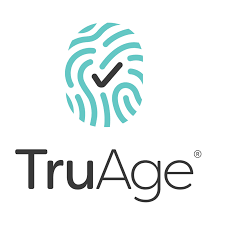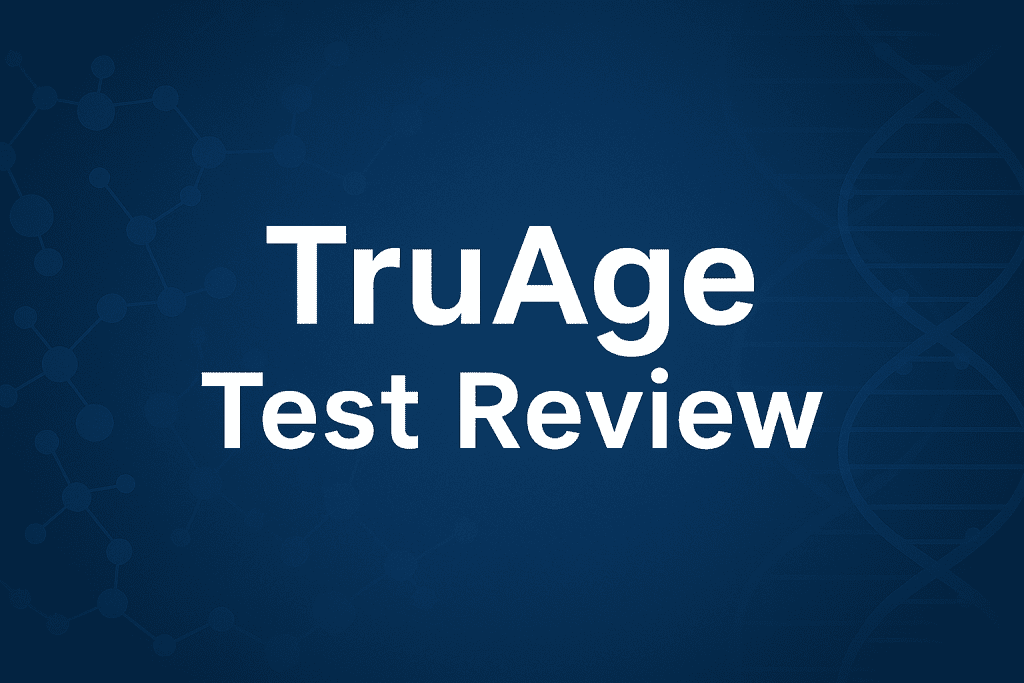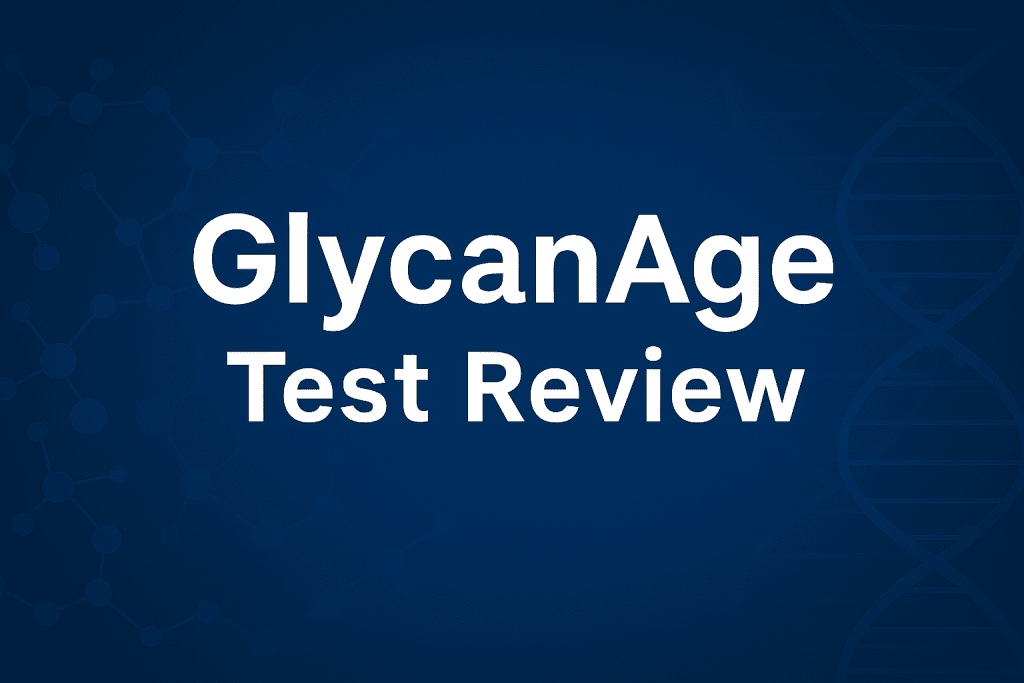
More people are using biological age testing to understand how their body is aging, not just their birthdate. While full coverage is rare, a biological age test is covered by insurance in some cases, especially with a doctor’s order or medical necessity. Many tests also qualify for HSA or FSA. This guide shows what’s covered in 2025, which tests are eligible, and how to make the most of them.
Table of Contents
What does it mean for a biological age test to be “covered” by insurance?
Usually, it means your plan may reimburse you via HSA/FSA or doctor-prescribed testing. not that the test is 100% paid by insurance like routine labs.
Biological age tests are typically categorized as preventive or lifestyle wellness tools, meaning they aren’t automatically covered by insurance plans. But there are exceptions:
- Some plans will cover them if a licensed provider orders the test for a medical reason.
- Others may reimburse the cost if you provide a Letter of Medical Necessity (LMN).
- Many tests are eligible for HSA/FSA reimbursement—even if traditional insurance doesn’t cover them.
The key is to know which tests meet these criteria and how to submit your claim properly.
Are any biological age tests fully covered by insurance?
Rarely. Full coverage only happens when the test is medically necessary and part of disease management ordered by a physician.
- It’s part of a broader panel used to monitor chronic disease, inflammation, or hormonal imbalance
- It’s ordered by a licensed healthcare provider
- It directly affects treatment decisions
For example, TruAge by TruDiagnostic or NOVOS Age may be reimbursed if used in a clinical setting and paired with other biomarker analysis. Some employers or concierge medical programs may even subsidize them.
Can I pay for biological age testing with HSA or FSA?
Yes, most reputable age tests are HSA/FSA-eligible, especially with an itemized invoice and Letter of Medical Necessity (LMN).
To qualify:
- The test must be considered a diagnostic health expense (not just informational)
- You should obtain an itemized invoice
- A Letter of Medical Necessity from a physician may be requested by some FSA administrators
This makes HSA/FSA the most accessible path to partial reimbursement, even if your plan doesn’t officially “cover” the test.
Which biological age tests are eligible, and how much do they cost?
TruAge, NOVOS, and Nucleus Genomics often qualify. Prices range from $349 to $499, but discounts and bundles are available.
| Provider | Price | Method | Included | Rating / Actions |
|---|---|---|---|---|

TruAge 🥇 Best Overall |
$299 12% Off → TruINSIDER12 | OMICmAge + Blood |
| ⭐️⭐️⭐️⭐️⭐️ |

Nucleus Genomics | $499 + $39/y | Whole Genome + Swab |
| ⭐️⭐️⭐️⭐️⭐️ |

NOVOS Age | $349 | DunedinPACE + Blood |
| ⭐️⭐️⭐️⭐️☆ |
Some links may be affiliate. We may receive a small fee if you purchase at no extra cost for you.

When should I ask my doctor to get involved?
If you’re hoping for insurance help, talk to your doctor first, they can evaluate your risks and provide a valid LMN.
They should first evaluate:
- Your biological risk factors
- Family history of age-related disease
- Your goals (e.g., early intervention for metabolic or inflammatory issues)
They may be willing to write an LMN or even order the test directly through a clinical partner program. This could unlock partial or full reimbursement, depending on your insurance plan.
Are state laws changing around biological age test coverage?
Yes. States like Connecticut have passed legislation requiring biomarker test coverage for certain chronic conditions starting in 2026. While these don’t yet apply to aging clocks, the legal momentum is shifting. Some longevity programs bundled through primary care or concierge health are already testing the waters.
It’s worth keeping an eye on future policy shifts that could make biological age testing a standard benefit in personalized medicine.
Should I still take a biological age test if it’s not covered?
Definitely. These tests give insight into your cellular health, pace of aging, and response to interventions — data worth having.
- Is my lifestyle helping or hurting my cellular health?
- Are supplements, workouts, or sleep changes working?
- What’s aging fastest: inflammation, metabolism, immunity?
Many tests now include personalized advice, re-testing options, and even age estimates for your organs or immune system. For health-optimized individuals, that’s data worth having.
What can I do to improve my chances of getting reimbursed?
- Always request an itemized invoice
- Use your own credit card, then claim via HSA/FSA (don’t pre-pay with HSA card unless approved)
- Ask your provider for a Letter of Medical Necessity
- Submit before your plan year deadline
- Track results and share improvements with your provider
Is a biological age test covered by insurance in 2025?
In some cases, yes. Tests like TruAge or NOVOS may be covered if ordered by a physician and used for medical purposes. Most direct-to-consumer tests are not covered unless medically necessary.
Can I pay for a biological age test with HSA or FSA?
Yes. Most reputable providers issue receipts that qualify for HSA/FSA reimbursement, especially if you include a Letter of Medical Necessity.
Which test is most likely to be reimbursed?
TruDiagnostic’s TruAge and NOVOS Age are the most commonly approved tests when used clinically. Others may qualify depending on your plan.
Will Medicare cover a biological age test?
Not at this time. Medicare may cover genetic tests for disease risk, but not aging clocks.
Is GlycanAge covered?
No. GlycanAge is not currently eligible for HSA/FSA and is not covered by insurance.
Can I get reimbursed if I already bought the test?
Yes, if you request a proper invoice and your plan allows retroactive claims. Check with your provider or plan administrator.
Do I need to test more than once a year?
Not usually. Once or twice a year is enough to measure long-term trends. Frequent testing is unnecessary unless you’re tracking a major intervention.
Created by SimplyAntiAging.com’s Editorial Research Team
Reviewed and updated for accuracy in December 2025.



